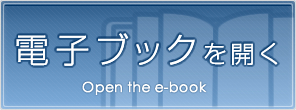For the Safety Navigation In Japanese Coastal Waters page 116/120
このページは For the Safety Navigation In Japanese Coastal Waters の電子ブックに掲載されている116ページの概要です。
秒後に電子ブックの対象ページへ移動します。
「電子ブックを開く」をクリックすると今すぐ対象ページへ移動します。
概要:
-14-Visual Recognition of Fishing Vessels/Fishing Gear and Recommended Measures to be TakenScene Judgement Countermeasures RemarksFixed net fishingBuoys and floatsare arrangedcondinuously frominshor....
-14-Visual Recognition of Fishing Vessels/Fishing Gear and Recommended Measures to be TakenScene Judgement Countermeasures RemarksFixed net fishingBuoys and floatsare arrangedcondinuously frominshore tooffshore.There are a flagand a light at theouter end, and thelight is lit at night.The fixed net cannot becrossed by a ship. The netstretches to a depth of 27 m(15m in Okinawa, excludingthe inland sea). A small onestretches 100 metres from theshore, but a large one reaches2,000 to 3,000 metres. Specialattention must be paid whenproceeding along the coast forsheltering, or when the shipenters a bay.Fishing operations usingthis method are carried outthroughout waters along thecoasts of Japan.See the map of set netarrangements issued by theHydrographic Departmentof the Maritime SafetyBureau. Pay attention tochanges due to updating.Pole and linefishing Afisherman is poleand line fishingwhile rowing withone hand, andwithout castinganchor.Fishing boats for pole and linefishing are often see in groups.Fishermen are often carelessabout the passage of merchantships due to their concentrationon fishing. It is advisable toattract their attention.When the ship has to clear anarea of fishing operations,allow sufficient room on bothsides of the ship.Pole and line fishing iscommon in inland seas, bayarea, and waters nearchannels.Pole and linefishing(motor-drivenfishing boat)Motor-drivenfishing boatsengagedin poleand line fishing donot stay in a fixedarea, but driftalong the flow ofcurrents.Boats' engines are normallyready for immediate operation,so averting collision is easy forboth parties.In any case, leave sufficientroom for manoeuvring.Often seen in inland seas,by area and waters nearchannels.Pole and linefishing(motor-drivenfishing boat)No anchor is cast.Fishing is carriedon with the boatheading windwardusing a sailFishing operations using thismethod are often performed intraffic routes.Pay careful attention to theirmovements, and if there is arisk of collision, attract theirattention and takecollision-averting manoeuvreswith care.Often seen at the mouth of abay.Pleasure fishing onSaturdays and Sundays byamateur fishermen oftenadopts this method, andspecial precautions arePole and lineskipjack fishingPole and lineskipjack fishingoperations aredone whilespraying wateronto the seasurface.Fishing operations are oftendone in a large sea area.It is advisable that collisionaverting manourvres are takenearlier with an ampleallowance of time left.Fishing operations in daytime.Pole and line skipjackfishing is carried on in seaareas along the Kuroshioand its branches, necessary.

